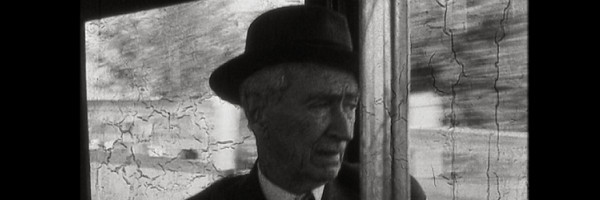
RESCUED. 68 years awaiting the filmed memory
Ficha
On the 17th of May, Galician Literature Day, the Vigo Museum of Contemporary Art presents the documentary RESCUED. 68 years awaiting the filmed memory . This historical document was filmed in 1951 and 1952 and it was taken from the archives of the Beiras Cal family, before being recovered from oblivion by Miguel Piñeiro and the Atlantis Multimedia production team.
The film includes a piece about the architect, Manuel Gómez Román and his admission into the Royal Galician Academy in addition to other historical recordings by the Galicianist intellectual, Antón Beiras, which were produced as a “counter-NODO” (NODOs were state controlled cinema newsreels produced in Spain and closely associated with Franco’s regime) for the Galician culture in exile.
The presentation will take place on Friday the 17th at 11.15, and it will be accompanied by the reflections of historian, Xurxo Martínez Gonzaléz. Following the event, and until the 15th of September, the documentary will be projected in a continuous loop in one of the exhibition rooms on the ground floor.
Síntese do proxecto
RESCUED. 68 years awaiting the filmed memory
Duration: 37 minutes
The ATLANTIS MULTIMEDIA team who were involved in recovering the film:
Miguel Piñeiro. Project director and producer
Manuel Iglesia. Digitisation technician
Fernando Alfonsín, from Alfonsín Lab. Postproduction
Carme Varela. Content and documentation
In the year 1951, Antón Beiras’s company took on the task of creating a documentary archive to relate exactly what was happening in Galicia, in the same way as the NODOs were recording what was occuring in Spain in this era. He was aware that this important part of our history would not be recorded given that it was not considered to be of interest to the officials of that time. In this context he made several recordings.
In 2016, Miguel Piñeiro was looking through the Beiras Cal family archive when he found a film in a very damaged condition and he had no idea what footage it contained. After consulting several specialised laboratories in Madrid, Lisbon and California he ruled out the possibility of recovering the film given that the material was “split” and “vinegary”, therefore meaning that it would be impossible to scan it automatically both due to the high cost of this process given the condition of the film and the limited guarantee of success. Faced with these circumstances, he had to decide whether to give up or attempt to recover the material using any means that the Atlantis Multimedia production team had available to them.
The recovery process
In order to recover the film’s content, extremely intensive work was required which was carried out in four phases:
- Preparation of the physical material
- Scanning of the material
- Processing of the files
- Input of photograms and sequential montage
With 16,789 individual photograms and 118 sequential takes, it took 1,289 hours of hard work to bring this film, which was all but as good as lost, to light, and its content certainly didn’t disappoint.
CONTENT OF THE RECORDINGS
- A Homage to Perfecto Feijóo in Pontevedra with participation by the Galician Centre in Buenos Aires, and the hanging of a plaque. Amongst others, Ramón Otero Pedrayo participated in this ceremony as he had been given the task of commenting on the figure of Feijóo and his contribution to Galicia’s musical development. A performance by the Aires da Terra choir, founded by Feijóo, was also recorded.
- Ceremonies from the Royal Galician Academy in A Coruña performed in memory of Curros Enríquez and Emilia Pardo Bazán. In these ceremonies, plaques were placed on the monuments of both of these writers. A meeting of the Royal Galician Academy was also filmed with the participation of Francisco Fernández del Riego, Casás, Calzado, Paulino Pedret, amongst others. Likewise, the interventions when the plaques were discovered were also recorded.
- Performance by the Polyphonic Coral Society of Pontevedra, directed by Antonio Iglesias Vilarelle and his admission into the Academy. Speech by Filgueira Valverde and awarding of the Academy medal by Manuel Casás.
- A considerable part of this film is a documentary piece about Manuel Gómez Román in which we see him working in his study, with the stonemasons at the worksites, wandering around the city on foot and by tram, and attending the topping off ceremonies for some of his pieces of work.
- Manuel Gómez Román’s admission into the Royal Galician Academy and images from Ramón Otero Pedrayo’s reply speech.
- Visit to the Galaxia Editorial in which Calzado was received by Otero Pedrayo, Cabanillas, Gómez Román, Illa Couto and Francisco del Riego amongst others. At the same time as the publications which had already been produced by the editorial during its short history are presented.
- Celebratory meal for the visiting members of the Galician Centre in which Valentín Paz Andrade and Martínez Risco, amongst others, made speeches. The event culminated with a group photo and a performance by a group of bagpipe players.

